When Houston’s sweltering summers give way to surprisingly cold winter nights, your home’s comfort depends on two critical systems working in perfect harmony: your air conditioner and furnace. Most Houston homeowners don’t realize that these dual units share components, ductwork, and dependencies that make combined maintenance not just convenientbut essential. A malfunction in one system can compromise the other, leading to costly repairs, higher energy bills, and uncomfortable indoor temperatures when you need climate control most.
At 75 Degree AC, we’ve serviced thousands of dual-unit systems across Houston since 2016, and we’ve seen firsthand how integrated AC furnace repair saves homeowners both money and frustration. This comprehensive guide explains everything you need to know about maintaining and repairing your combined HVAC system, from recognizing early warning signs to understanding the repair process and scheduling preventive maintenance that extends equipment lifespan.
Understanding Your Dual-Unit HVAC System
A dual-unit HVAC system combines your air conditioning and heating equipment into one integrated climate control solution. While your outdoor AC condenser and indoor furnace may seem like separate appliances, they share critical components including the blower motor, air handler, ductwork, thermostat controls, and often the same air filtration system.
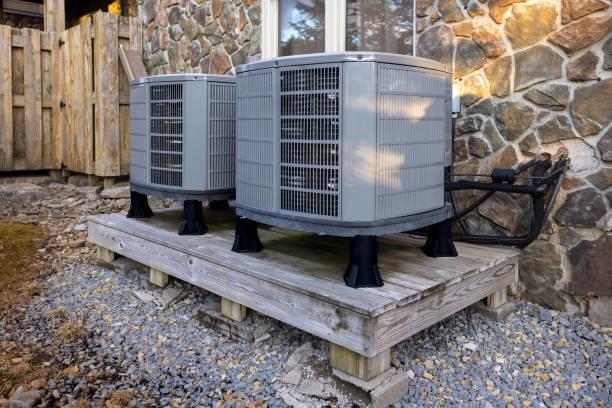
This integration creates efficiency advantagesyou’re not running two completely separate systemsbut it also means problems in one unit can cascade into the other. According to the U.S. Department of Energy, properly maintained dual-unit systems operate 15-20% more efficiently than neglected systems, translating to significant savings on Houston’s notoriously high summer energy bills.
How AC and Furnace Units Work Together
Your thermostat serves as the command center, signaling which unit should activate based on your temperature settings. During cooling season, refrigerant circulates through the outdoor condenser and indoor evaporator coil, while the blower motor pushes cooled air through your ductwork. When heating is needed, your furnace burners ignite (for gas systems) or heating elements activate (for electric systems), with that same blower motor distributing warm air throughout your home.
This shared infrastructure is why experienced HVAC technicians always inspect both units during service calls. A dirty air filter affects both heating and cooling performance. Ductwork leaks waste energy whether you’re running the AC or furnace. Electrical issues at the air handler impact both systems simultaneously.
Warning Signs Your Dual-Unit System Needs Repair
Recognizing problems early prevents minor issues from becoming major breakdowns. Houston’s extreme temperature swings put additional stress on HVAC equipment, making prompt attention to warning signs especially important.
Immediate Red Flags Requiring Professional Service
- Complete system failure: No heating or cooling despite thermostat adjustments typically indicates electrical problems, thermostat malfunction, or blower motor failure affecting both units
- Strange odors: Burning smells from the furnace, musty odors suggesting mold growth, or refrigerant leaks producing a sweet, chemical scent all demand immediate inspection
- Unusual noises: Grinding, squealing, banging, or rattling sounds indicate mechanical problems with the blower motor, fan belts, or internal components
- Visible damage: Rust, corrosion, water pooling around equipment, or cracked heat exchangers present safety hazards requiring urgent attention
- Carbon monoxide detector activation: This life-threatening situation requires immediate system shutdown and professional furnace repair
Performance Issues Indicating Maintenance Needs
- Uneven temperatures: Hot and cold spots throughout your home suggest ductwork problems, inadequate airflow, or system sizing issues
- Frequent cycling: Systems turning on and off repeatedly indicate thermostat problems, refrigerant leaks, or airflow restrictions
- Rising energy bills: Unexplained increases in utility costs signal declining efficiency from dirty components, refrigerant loss, or mechanical wear
- Extended run times: Systems running constantly without achieving desired temperatures struggle with capacity problems or maintenance neglect
- Poor air quality: Increased dust, humidity problems, or persistent odors point to filtration issues or ductwork contamination
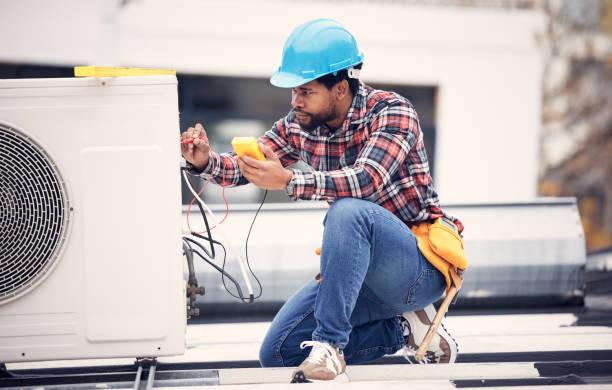
The Comprehensive AC Furnace Repair Process
Professional dual-unit service involves systematic inspection, diagnosis, and repair of both your cooling and heating systems. At 75 Degree AC, our certified technicians follow a proven protocol that ensures nothing gets overlooked.
Initial System Evaluation
Every service call begins with a thorough visual inspection of both indoor and outdoor components. We examine your furnace heat exchanger for cracks, check AC refrigerant lines for damage, inspect electrical connections, and evaluate overall system condition. Our technicians use diagnostic tools including digital multimeters, refrigerant gauges, combustion analyzers, and thermal imaging cameras to identify problems invisible to the naked eye.
This comprehensive evaluation typically takes 45-90 minutes for dual-unit systems. We document our findings, photograph problem areas, and provide detailed explanations before recommending any repairs. Transparent communication eliminates surprises and helps homeowners make informed decisions about their HVAC investment.
Common Repair Scenarios
| Problem | Typical Cause | Repair Solution | Prevention |
|---|---|---|---|
| Blower motor failure | Worn bearings, overheating, age | Motor replacement, capacitor upgrade | Annual lubrication, filter changes |
| Refrigerant leak | Corrosion, vibration damage, poor installation | Leak repair, system recharge | Bi-annual professional inspection |
| Thermostat malfunction | Wiring issues, calibration drift, battery failure | Recalibration or replacement | Battery replacement, regular testing |
| Heat exchanger cracks | Age, corrosion, thermal stress | Heat exchanger or furnace replacement | Annual combustion analysis |
| Ductwork leaks | Poor sealing, age, installation quality | Sealing, insulation, duct replacement | Professional duct inspection every 3-5 years |
Advanced Diagnostic Techniques
Modern HVAC repair goes beyond simple part replacement. Our technicians measure airflow velocity, test system pressures, analyze combustion efficiency, and verify electrical loads to ensure optimal performance. For furnaces, we conduct safety inspections checking gas pressure, flame sensor operation, and exhaust venting. AC systems receive refrigerant superheat and subcooling measurements confirming proper charge levels.
These precision diagnostics identify root causes rather than just treating symptoms. A furnace repeatedly overheating might need a new limit switchor it could indicate restricted airflow from dirty ducts requiring professional duct cleaning. Accurate diagnosis saves money by addressing actual problems instead of unnecessary component replacement.
Benefits of Combined AC and Furnace Maintenance
Servicing both systems simultaneously offers advantages that separate maintenance appointments cannot match. Understanding these benefits helps Houston homeowners make smart decisions about their HVAC care.
Cost Efficiency and Time Savings
Combined service calls eliminate duplicate trip charges, reduce labor costs through efficient scheduling, and often qualify for bundled service discounts. At 75 Degree AC, our dual-unit maintenance plans save Houston homeowners an average of $150-$300 annually compared to separate AC and furnace service appointments. You also avoid the hassle of coordinating multiple technician visitseverything gets handled in one comprehensive appointment.
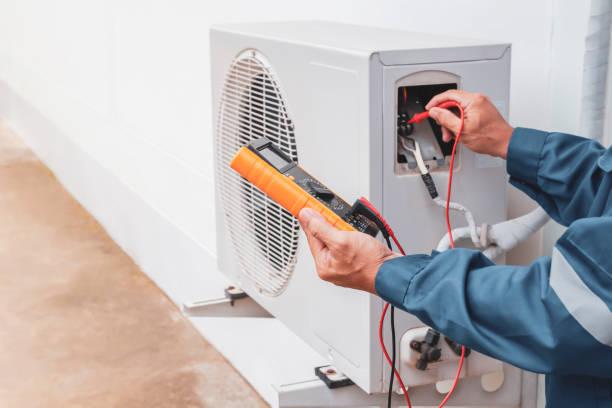
Enhanced System Performance
Shared components receive coordinated attention during dual-unit service. Your blower motor gets lubricated for both heating and cooling operation. Ductwork inspection identifies leaks wasting energy in both modes. Electrical connections get tightened across both systems. This holistic approach optimizes overall performance in ways that single-system service cannot achieve.
Research from the Air Conditioning Contractors of America shows that coordinated dual-unit maintenance improves energy efficiency by 10-15% compared to systems receiving only single-unit attention. For Houston households running HVAC equipment 8-10 months yearly, these efficiency gains represent substantial savings.
Extended Equipment Lifespan
Proper maintenance is the single most important factor in HVAC longevity. AC units typically last 12-15 years with regular care, while furnaces can operate 15-20 years under similar conditions. Neglected systems fail prematurely, often requiring expensive replacement years before their expected lifespan.
Combined maintenance catches problems early when repairs cost less and prevent cascading failures. A failing capacitor identified during routine service costs $150-$300 to replace. Ignoring it leads to compressor failure requiring $1,500-$2,500 in repairs or complete system replacement costing $5,000-$10,000.
Establishing an Effective Maintenance Schedule
Proactive maintenance prevents most emergency repairs while keeping systems running efficiently. Houston’s climate demands more frequent attention than moderate regions due to extended cooling seasons and occasional deep freezes stressing heating equipment.
Recommended Service Frequency
Professional HVAC organizations recommend bi-annual service for dual-unit systems: once before cooling season (March-April) and once before heating season (October-November). This schedule ensures both systems receive inspection, cleaning, and adjustment before peak demand periods.
For Houston’s specific climate, we recommend the following maintenance timeline:
- Spring (March-April): Comprehensive AC inspection including refrigerant check, coil cleaning, electrical testing, and condensate drain clearing
- Fall (October-November): Complete furnace service including combustion analysis, heat exchanger inspection, burner cleaning, and safety control testing
- Monthly: Homeowner filter checks and replacement (every 30-90 days depending on filter type and usage)
- Quarterly: Thermostat battery replacement, outdoor unit debris removal, and indoor vent inspection
What Professional Maintenance Includes
Comprehensive dual-unit service from 75 Degree AC covers both systems thoroughly. Our certified technicians perform a detailed 35-point inspection addressing:
- Air Conditioning System: Refrigerant levels, compressor operation, condenser coil cleaning, electrical connections, contactor inspection, capacitor testing, condensate drain cleaning, evaporator coil inspection, and refrigerant line evaluation
- Furnace System: Heat exchanger inspection, burner cleaning and adjustment, flame sensor testing, gas pressure verification, safety control testing, exhaust venting inspection, pilot light or ignition system check, and combustion efficiency analysis
- Shared Components: Blower motor lubrication, air filter replacement, ductwork inspection, thermostat calibration, electrical panel evaluation, and indoor air quality assessment
This comprehensive approach typically requires 90-120 minutes for thorough dual-unit service. Upon completion, you receive a detailed service report documenting system condition, maintenance performed, and any recommendations for future attention.
Cost Considerations for AC Furnace Repair
Understanding typical repair costs helps Houston homeowners budget appropriately and make informed decisions when problems arise. Prices vary based on problem complexity, equipment type, and replacement part quality.
Typical Repair Cost Ranges
| Repair Type | Average Cost Range | Factors Affecting Price |
|---|---|---|
| Thermostat replacement | $150 – $450 | Basic vs. smart model, complexity of installation |
| Capacitor replacement | $150 – $350 | Single vs. dual capacitor, emergency service timing |
| Blower motor replacement | $450 – $800 | Motor size, variable speed vs. single speed |
| Refrigerant leak repair & recharge | $500 – $1,500 | Leak location, refrigerant type, system size |
| Heat exchanger replacement | $1,200 – $2,500 | Furnace model, accessibility, labor intensity |
| Control board replacement | $300 – $700 | Board type, programming requirements |
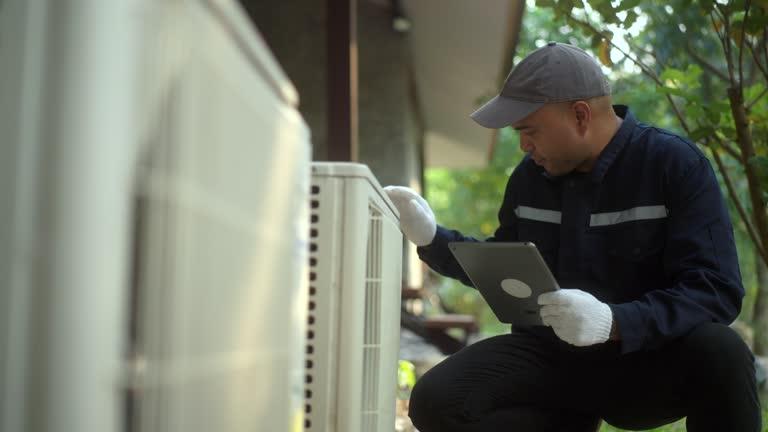
Maintenance Plan Value
Preventive maintenance plans offer predictable annual costs while reducing emergency repair frequency. Our maintenance agreements at 75 Degree AC include priority scheduling, discounted repair rates, and no overtime charges for emergency callsbenefits that quickly offset the plan cost when problems arise.
Industry data shows that homeowners with maintenance plans experience 70% fewer emergency repairs than those without regular service. The average maintenance plan costs $150-$300 annually, while emergency repairs average $500-$1,200 per incident. The math clearly favors preventive care.
Why Professional Service Matters for Dual-Unit Systems
While DIY enthusiasm serves homeowners well for simple tasks like filter changes, dual-unit HVAC systems require professional expertise for safe, effective repair and maintenance. The complexity of modern equipment, safety considerations, and efficiency optimization demand trained technicians with specialized tools and knowledge.
Technical Expertise and Certification
Licensed HVAC technicians complete extensive training covering electrical systems, refrigeration principles, combustion science, airflow dynamics, and safety protocols. At 75 Degree AC, our team holds EPA certification for refrigerant handling, NATE certification demonstrating technical competence, and manufacturer-specific training on various equipment brands.
This expertise matters because modern HVAC systems integrate sophisticated electronics, precise mechanical components, and safety controls that require proper diagnosis and adjustment. A homeowner replacing a capacitor without proper testing might install the wrong specification, leading to premature failure. A technician measures actual electrical loads and installs correctly sized replacements that optimize performance.
Safety Considerations
Furnace repair involves natural gas systems, high-voltage electrical components, and carbon monoxide risks that demand professional attention. According to the National Fire Protection Association, heating equipment causes approximately 15% of home fires annually, with improper maintenance and repair being leading factors. Professional technicians understand these safety risks and follow protocols protecting both your family and property.
Similarly, AC systems contain refrigerants regulated under federal law due to environmental and safety concerns. EPA regulations require certification for anyone handling refrigerants, with significant penalties for violations. Professional service ensures compliance while protecting our environment.
Warranty Protection
Most HVAC manufacturers require professional installation and maintenance as conditions of their equipment warranties. DIY repairs or service by unlicensed technicians often void these warranties, leaving homeowners financially responsible for problems that should have been covered. Professional service maintains warranty validity while providing documentation supporting future claims.
At 75 Degree AC, we document all service work, maintain detailed records, and provide receipts meeting warranty requirements. Our work also carries our own guarantee, giving you double protection for repairs and maintenance performed.
Choosing the Right HVAC Contractor in Houston
Not all HVAC companies deliver the same level of service, expertise, or value. Houston homeowners should evaluate contractors carefully, considering factors beyond just pricing when selecting their HVAC repair provider.
Essential Qualifications to Verify
- Licensing and Insurance: Texas requires HVAC contractors to hold proper licenses, with technicians certified for their work. Verify general liability insurance and workers’ compensation coverage protecting you from liability
- Experience and Reputation: Look for established companies with years of local experience. Check online reviews, BBB ratings, and ask for references from recent customers
- Transparent Pricing: Reputable contractors provide detailed estimates before work begins, explaining all costs without hidden fees or surprise charges
- Manufacturer Certifications: Factory-trained technicians understand specific equipment better, leading to more accurate diagnosis and effective repairs
- Emergency Availability: HVAC problems don’t follow business hours. Companies offering 24/7 emergency service provide peace of mind when systems fail
The 75 Degree AC Difference
Since 2016, 75 Degree AC has built our reputation on honest service, technical excellence, and customer satisfaction. As a locally-owned Houston company, we understand the unique demands our climate places on HVAC equipment. Our technicians live and work in the communities we serve, taking personal pride in keeping Houston families comfortable.
We provide upfront pricing before any work begins, eliminating surprises and building trust. Our licensed technicians arrive in clearly marked vehicles, dressed professionally, and equipped with tools and parts for efficient service. We respect your home, protecting flooring and work areas while maintaining clean job sites.
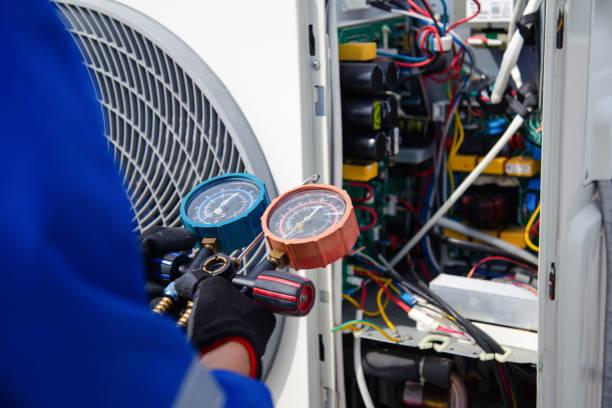
Conclusion: Invest in Your Comfort and Peace of Mind
Your dual-unit HVAC system represents a significant investment protecting your Houston home’s comfort, air quality, and energy efficiency. Professional AC furnace repair and maintenance extend equipment lifespan, prevent costly breakdowns, and ensure reliable performance through every season.
The key takeaways for Houston homeowners include:
- Combined AC and furnace service saves money while improving overall system performance
- Bi-annual professional maintenance prevents most emergency repairs and extends equipment life
- Early problem recognition through regular inspection catches issues before they become expensive
- Professional service ensures safety, maintains warranties, and delivers optimal efficiency
- Choosing experienced, licensed contractors like 75 Degree AC provides peace of mind and quality results
Don’t wait for a breakdown to think about your HVAC system. Proactive maintenance costs far less than emergency repairs, while providing reliable comfort throughout the year. Whether you need immediate repair, preventive maintenance, or expert advice about your dual-unit system, 75 Degree AC stands ready to deliver the professional service Houston homeowners trust.
Schedule Your Dual-Unit Maintenance Today
Contact 75 Degree AC at (713) 598-2737 for expert AC furnace repair and maintenance in Houston. Our certified technicians provide prompt, professional service with transparent pricing and guaranteed results. We offer same-day service for urgent repairs and convenient scheduling for preventive maintenance. Protect your investment and ensure year-round comfortcall now or visit our website to book your appointment.
Serving Houston and surrounding areas including Katy, Sugar Land, The Woodlands, Cypress, Pearland, and beyond.
Frequently Asked Questions
How often should I have my dual-unit HVAC system serviced?
Professional maintenance should occur twice yearlyonce before cooling season (March-April) and once before heating season (October-November). This bi-annual schedule ensures both your AC and furnace receive proper attention before peak usage periods. Additionally, homeowners should replace air filters monthly to every 90 days depending on filter type, household factors, and usage patterns. Houston’s extended cooling season and occasional winter cold snaps make this maintenance schedule especially important for optimal performance and longevity.
Can I service my AC and furnace at the same appointment?
Yes, absolutely. Combined service appointments save time and money while ensuring comprehensive attention to all shared components. At 75 Degree AC, our technicians routinely perform dual-unit maintenance during single visits, inspecting and servicing both heating and cooling systems, shared ductwork, electrical connections, and the blower assembly. This approach typically requires 90-120 minutes and provides better value than scheduling separate appointments for each system.
What’s the average lifespan of an AC and furnace system?
With proper maintenance, air conditioning units typically last 12-15 years in Houston’s climate, while furnaces can operate 15-20 years. However, neglected systems often fail prematurely, sometimes within 8-10 years. Regular professional service, timely filter changes, and prompt repair of minor issues significantly extend equipment lifespan. The investment in preventive maintenance pays dividends by delaying the substantial cost of system replacement.
Are maintenance plans worth the cost?
Maintenance plans offer excellent value for most Houston homeowners. Annual plans typically cost $150-$300 and include bi-annual service visits, priority scheduling, discounted repair rates, and waived emergency service fees. Studies show that maintained systems experience 70% fewer emergency repairs than neglected equipment. Considering that a single emergency repair often costs $500-$1,200, the maintenance plan investment protects against much larger expenses while ensuring reliable performance.
How do I know if I need repair or replacement?
Consider replacement when repair costs exceed 50% of replacement value, your system is over 15 years old, you experience frequent breakdowns, or energy bills have increased dramatically despite stable usage. Modern systems offer significantly better efficiency, often reducing energy costs by 20-40% compared to older equipment. However, if your system is relatively new, has received regular maintenance, and the repair is reasonable, fixing it makes financial sense. Our technicians at 75 Degree AC provide honest assessments, explaining all options so you can make informed decisions.
What causes the most common dual-unit system failures?
The top causes of system failure include dirty air filters restricting airflow, refrigerant leaks from corrosion or damage, electrical component failure (especially capacitors and contactors), thermostat malfunctions, and lack of routine maintenance allowing small problems to escalate. Houston’s humidity contributes to condensate drain clogs, while temperature extremes stress components. Regular maintenance identifies and addresses these issues before they cause system failure.
Should I repair or replace an older furnace with a cracked heat exchanger?
Cracked heat exchangers represent serious safety hazards, potentially allowing carbon monoxide into your home’s air supply. Replacement is almost always the right choice because heat exchanger replacement costs 50-80% of new furnace pricing, and a cracked exchanger indicates the system has reached the end of its useful life. Modern furnaces offer superior efficiency, improved safety features, and manufacturer warranties providing long-term protection. Our team can help you explore options and select the right heating system for your needs.
Can one technician handle both AC and furnace repairs?
Yes, certified HVAC technicians receive comprehensive training covering both cooling and heating systems. At 75 Degree AC, our technicians hold licenses and certifications demonstrating competence across all HVAC disciplines. This expertise allows us to diagnose and repair problems affecting either or both systems during a single service call, providing convenience and efficiency that specialized-only technicians cannot match.
